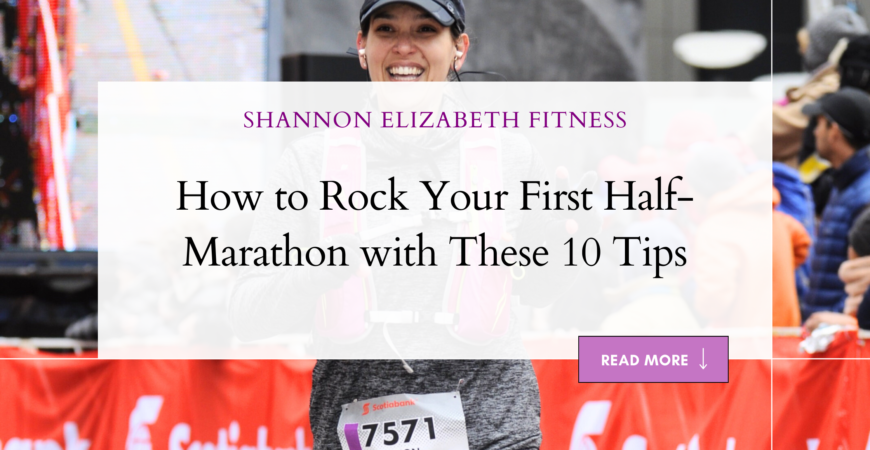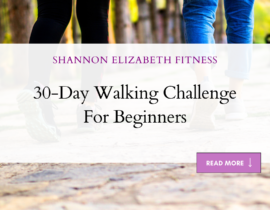In October 2018, I crossed the finish line of my very first half-marathon! Setting this as my goal for the year, I dedicated all my free time to training, and transformed myself from a complete non-runner in the fall of 2017 into someone who could conquer a major race just one year later. It is easily my proudest fitness achievement to date.
Transitioning from a non-runner to a half-marathon finisher meant that I was constantly stepping into the unknown. Every run longer than 3km was a step into uncharted territory—which was a bit intimidating. Along my training journey, I learned countless invaluable lessons, with each run teaching me something new about running, resilience, and myself.
Here are my top 10 tips:
1. Picking Your First Half-marathon
The first lesson that I learned was that a surprising amount goes into choosing which race will be your first half-marathon. I thought I did a lot of research before I chose my race but turns out I did the wrong research. I focused mostly on how hilly the race route was and where the race was held.
What I should have focused on was:
- Time of year. I chose a late October race to give myself as much training time as possible. However, I should have focused on what kind of weather conditions I might have that time of year. I live in Canada so the end of October weather is pretty cold, and I didn’t give that a second thought. It ended up being a very big deal!
- What type of race? Think all races are the same? Think again! I accidentally chose a “big deal” race for my first half-marathon. That meant there were tons of international runners, huge sponsors, race entertainment and more. It made me feel really overwhelmed throughout the race. In hindsight, I should have picked a much more low-key race.
- Race Location. I chose a race in a nearby city because of its beautiful route. Big mistake! I should have chosen a race in my own city and allowed myself more time to relax and get myself together before my race. Instead, I was racing to get down to the city, park, get on the subway, get to the starting location and I didn’t get time to warm up. Not ideal for my first half-marathon.
2. Weather
Firstly, pay attention to tip 1 and choose a time of year when the weather won’t be a huge issue. Secondly, train in different weather conditions where possible. I started my training in the winter but from April until September, I was training in warm to hot conditions. And when the weather turned cool and rainy, I headed indoors to the treadmill. Oops! What I should have done was run in the cold drizzle. Why? Because that was pretty much my race day conditions and I was unprepared mentally to run in the cold. Train in all conditions that you might encounter on race day.
3. Eating While Running
If you’re gearing up for your first half-marathon, the concept of eating while running might seem strange, but it’s a really important part of long-distance running that you need to practice before race day. Managing your energy levels through proper nutrition during the race can make a big difference in your performance and overall experience.
Long before your race, start experimenting with different types of portable foods to discover what works best for your body. There are tons of options, from energy gels to gummy chews and even wafers designed specifically for endurance athletes. Each type of food offers different advantages, and it’s all about what your stomach can handle while you’re on the move.
I personally went through a phase of trying out various gels and chews, which are popular for their convenience and quick glucose boost. However, after several trials, I found that baby food—yes, the pureed kind—worked best for me. Flavors like sweet potato, mango, and apple not only sat well with my stomach but also provided a a yummy taste and the necessary carbs to keep my energy up.
Practice, Practice, Practice!
It’s important to dedicate several weeks during your training to practice eating your chosen race-day food. Use your long runs to test how your body reacts to the food. Does it digest well? Provide enough energy? Does it cause any stomach discomfort? Answering these questions during training will make sure that you won’t face any unpleasant surprises on your race day.
Remember, what works for one runner might not work for another, so this period of trial and error is really important. Get familiar with the timing of when to fuel and how much to eat. This kind of preparation will help you avoid the energy dips and maintain a consistent pace throughout your half-marathon. By race day, you should feel confident in your nutrition strategy and ready to tackle your race!
4. Race Wear
What you wear during your race is very important. You also want to have trained in exactly what you’ll be wearing at least once before race day. If you typically run with a hydration vest, don’t switch to a water belt on race day. Be consistent right down to what socks you’ll be wearing. Trust me, it does matter. Stay on top of the weather 14 days out from your race so you can be best prepared. Ultimately, go into your first half-marathon fully prepared for weather changes.
5. Shoes
Similar to my tip on racewear, it’s beyond important to train in the shoes you plan to wear on race day. This is not the time to underestimate the importance of a well-fitted, comfortable pair of running shoes. Early in your training, invest the time to visit a specialty running store where you can get professionally fitted. This ensures that the shoes you choose will support your unique foot shape and running style, helping to prevent injuries and discomfort during your long training runs.
Remember, your first half-marathon is definitely not the occasion for breaking in new shoes! Shoes need lots of time to mold to the contours of your feet, and this can’t be rushed by just one or two training sessions. Wearing shoes that are not sufficiently broken in can lead to painful blisters, unnecessary chafing, and even joint or muscle strain due to improper support or alignment.
Instead, plan to have your running shoes well-worn by race day. As a fun motivational tip, consider treating yourself to a brand-new pair of shoes as a reward after you cross the finish line. Not only does this give you something great to look forward to, but it also sets you up nicely for future training with a fresh pair of kicks ready for the next adventure!
6. Don’t Overpack
Keep it simple on race day and bring just what you need along with one second option of clothing (for bad weather). And then plan to store it all in baggage. Don’t bring a bunch of extra gels, food, liquid, clothes, etc because a.) you won’t need it and b.) it becomes a lot to carry around. Bring only what can fit into the storage bag provided by race officials.
7. Family and Friends
Plan ahead of time where your friends and family will be cheering and meeting you after. And have a contingency plan (I needed one!). Check out the race map and details a few days before and communicate as best you can about where everyone will be during your race. This makes it much easier to find your fans while you’re running! Also, make sure you have a clear plan about how to meet up with friends and family post-race. Have a backup plan too! I needed a back-up when hypothermia set in immediately after my race and I couldn’t make it to our agreed spot.
8. Chaffing and Blisters
Chafing and blisters don’t have to be a painful reality of training and racing! Thank goodness, there are plenty of products designed specifically to protect your skin and give you comfort during long runs. From specialized anti-chafing balms to performance socks and well-designed running gear, these products can make a big difference in how you experience your first half-marathon.
Before your race, and during training, make it a habit to apply a good layer of anti-chafing balm or gel to any areas where there might be irritation. Common hotspots include the inner thighs, underarms, and anywhere your clothing might create friction against your skin. Don’t forget about your feet too—a good pair of moisture-wicking socks can prevent blisters, and applying a protective balm can add an extra layer of safety.
On race day, be generous with these products! Apply them liberally to all the areas you’ve identified as problematic during your training runs. It’s better to be safe and comfortable than to face the distracting and often painful consequences of chafed skin or blisters mid-race. With the right prep, you can focus on enjoying and completing your half-marathon, rather than dealing with avoidable discomfort.
9. Have An Amazing Playlist
Having the right playlist can be so important during your race, providing you with a constant stream of energy and motivation that keeps your legs moving and your spirits high! While it’s true that some races have rules against wearing headphones for safety reasons, whenever you have the chance, create a playlist that features songs that pump you up and keep you focused. Pick tracks with tempos that match your running pace, or songs that have a personal significance that keeps you emotionally charged. This musical boost can help you maintain your rhythm, push through tough moments, and possibly even improve your performance by keeping you in a positive, energized state throughout your run.
10. Do What Works For You
Once you tell people that you’re running a half-marathon everyone is going to have advice to give you. I even had one person say, “Thirty years ago when I ran a 10km…”, it’s hilarious but also a little overwhelming. Take in the advice but at the end of the day, you have to do what is best for you.
What do you want to know about running a half-marathon? Ask me in the comments!
- Starting A NEW Fitness Journey At Nearly 40 Years Old! - 06/09/2024
- 30-Day Walking Challenge For Beginners - 12/05/2024
- 3 Simple Things That Healthy People Who DON’T Diet Do Differently - 10/05/2024





I ran my first half marathon a few years ago in early November. It snowed the night before! I was so annoyed at myself for running in cold weather, after having spent most of my training time in hot summer weather!
that was exactly how I felt! on race day I was like “what am I doing here in this cold?!”
Thanks Shannon, this information is seriously helpful. You should be Extremely Proud of your accomplishment. So much wisdom thanks for sharing.
Kathy Enright
thank you so much for reading and for your kind words <3 glad you enjoyed!